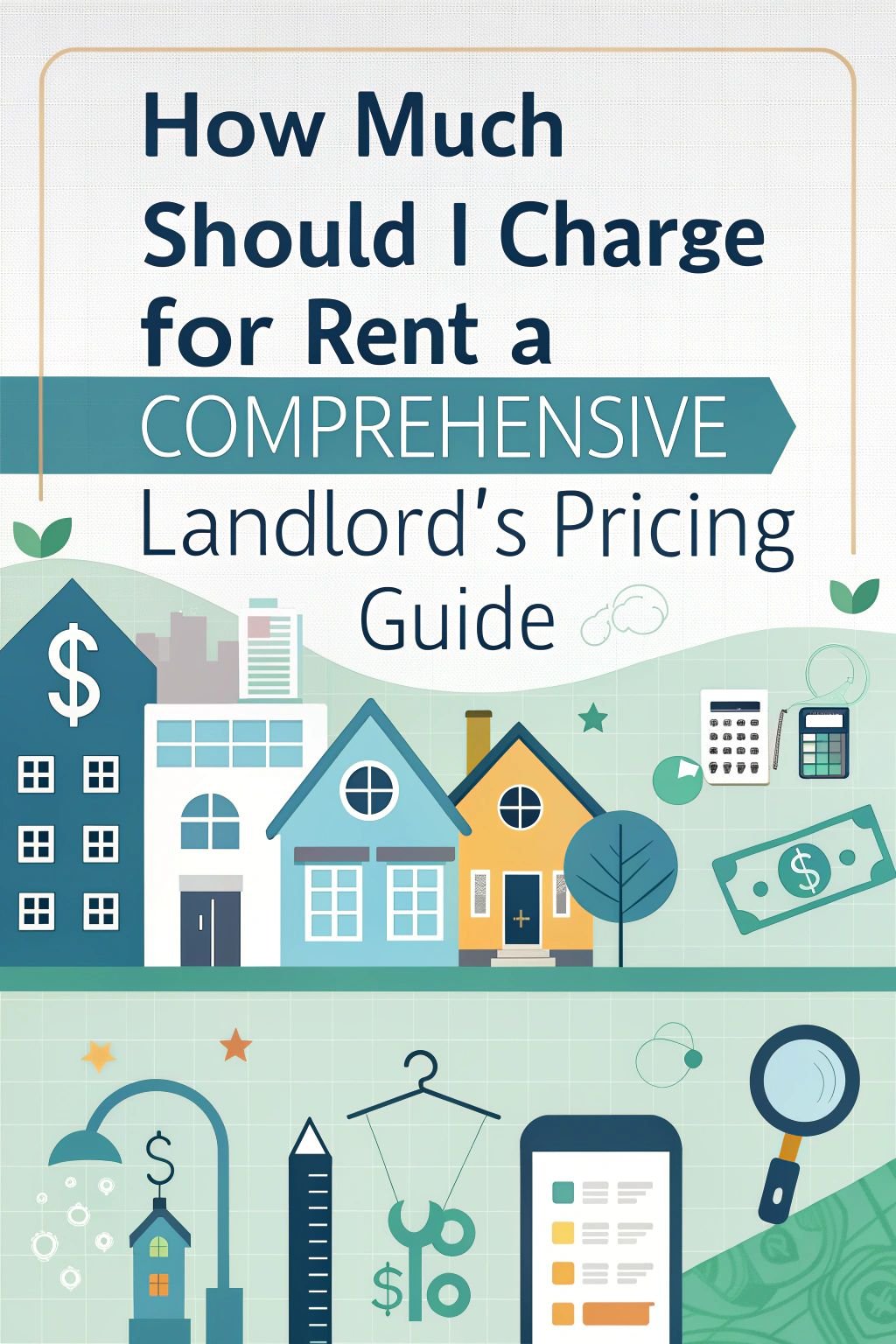Are you a landlord trying to figure out how much to charge for rent? Setting the right rental price is crucial for covering your property costs, making a profit, and attracting good tenants.
But with so many factors to consider, it can feel overwhelming to land on the perfect number.
Did you know the average asking rent in the US is around $1,900 per month? Of course, this varies a lot depending on where your property is located. This comprehensive guide will walk you through everything you need to know to confidently set your rental rate.
From using the 1% rule to analyzing market trends and factoring in property features, you’ll have all the tools to price your rental just right. Ready to become a rent-setting pro?
Key Takeaways
- Setting the right rental price is crucial for landlords to cover property costs, make a profit, and attract good tenants. The average asking rent in the US is around $1,900 per month, but this varies depending on the property’s location. Landlords can use the 1% rule (monthly rent should be 1% of the property’s value) and 2% rule (monthly rent should be 1-2% of the purchase price) as starting points for determining rent.
- Analyzing comparable properties, examining property characteristics and amenities, understanding local rent control laws, considering seasonality and market demand, and assessing financial needs and expenses are essential factors in setting rent accurately. Online tools like Zillow Rent Estimate, Rentometer, RentRange, and property management software can help determine appropriate rent prices.
- To calculate rent accurately, landlords can apply the 1% rule, use the price per square foot method (monthly rent divided by total square footage), and utilize online rent estimation tools like Zillow Rental Manager and Rentometer Pro. These tools provide insights into local market trends and help set competitive rental rates.
- Strategies for adjusting rent include keeping up with market trends by regularly analyzing comparable properties, implementing periodic rent increases of 2-5% while complying with local rent control laws and providing ample notice to tenants, and offering rent concessions such as free rent for the first month or waiving certain fees to attract tenants and boost occupancy rates.

Setting the right rental price involves analyzing several key factors. You need to examine comparable properties, property characteristics, local laws, seasonality, and your financial needs.
Analyzing Comparable Properties and Market Trends
To set a competitive rental price, analyze comparable properties in your area. Look at homes with similar square footage, bedrooms, bathrooms, and amenities. Tools like Zillow Rental Manager and Rentometer can help you find comparable rentals and their prices.
Pay attention to the condition and location of these properties, as they can impact rent.
Stay ahead of the curve by regularly reviewing market trends and adjusting your rental rates accordingly. – Jay Hernandez, Chief Editor and Licensed Real Estate Broker
Keep an eye on market trends to ensure your rental rate remains competitive. If demand for rentals in your area is high, you may be able to charge more. However, if there’s an oversupply of rental units, you might need to lower your price to attract tenants.
Regularly review rental listings and adjust your price based on market conditions. This will help you maximize your rental income while minimizing vacancy periods.
Examining Property Characteristics and Amenities
After researching comparable properties and market trends, take a closer look at your rental’s unique features and amenities. These characteristics play a significant role in determining the appropriate rent price.
On-site facilities like swimming pools, gyms, and parking services can boost your rental’s appeal and justify higher rates. In-unit perks such as outdoor spaces, air conditioning, and spacious storage areas also add value.
Generally, properties with more amenities command higher rents, while those lacking modern features or updates may need to charge less to attract tenants. For instance, adding a pool or advanced security measures could allow you to increase the rent.
By carefully evaluating your rental’s specific attributes and comparing them to similar properties, you can set a competitive price that reflects the true value of your offering.
Understanding Local Rent Control Laws
In addition to examining your property’s characteristics and amenities, it’s crucial to understand local rent control laws when setting rental rates. Rent control regulations vary by state and municipality, limiting how much landlords can charge for rent and how much they can increase it each year.
For example, California has statewide rent control since January 1, 2020, capping annual increases at 5% plus the cost of living, with a maximum of 10%. New York has rent stabilization laws and a Maximum Base Rent (MBR) system that’s reviewed every two years.
New Jersey limits rent increases to 2%-6%, depending on the municipality, while Oregon has a statewide cap, with the 2025 rent increase limit set at 10%.
Before setting your rental rate, check with your local housing authority or a real estate attorney to understand the specific rent control laws in your area. These laws may dictate the maximum rent you can charge based on factors like the age of your property, the number of units, and the location.
Some cities also have vacancy control laws that limit how much you can increase rent between tenants. Failing to comply with rent control regulations can result in legal penalties, so it’s essential to stay informed and adhere to these laws when determining your rental rate.
Tools like Zillow’s Rent Zestimate and Rentometer can help you estimate fair market rent for your property while staying within legal limits.
Considering Seasonality and Market Demand
Seasonality and market demand play crucial roles in determining the optimal rent for your property. Peak rental seasons, typically during the summer months, witness a surge in demand for rental units, allowing you to potentially charge higher rent.
Conversely, the winter months often experience a decline in rental demand, with fewer prospective tenants actively seeking new homes. To attract quality tenants during the off-season, you may need to adjust your rental rates accordingly.
By staying attuned to these seasonal fluctuations and adapting your pricing strategy, you can maximize your rental income while minimizing vacancy periods. Online tools like Zillow Rental Manager and Rentometer can provide valuable insights into current market trends and help you set competitive rates.
As you navigate the dynamic landscape of rental pricing, remember to strike a balance between optimizing your returns and maintaining a fair and attractive rent for your tenants. With a strategic approach to seasonality and market demand, you’ll be well-equipped to thrive as a landlord in any season.
Assessing Financial Needs and Expenses
After considering seasonality and market demand, it’s crucial to assess your financial needs and expenses as a landlord. Your rental income should cover your mortgage payments, property taxes, insurance premiums, and any employee or vendor costs.
Zillow’s Rent Zestimate tool can help you estimate the fair market rent for your property based on comparable rentals in your area.
To ensure profitability, aim for a rental rate that covers all your expenses and provides a reasonable return on investment. Bankrate’s Rental Property Calculator can help you determine if your rental income will exceed your costs.
Remember to factor in maintenance and repair expenses, which can range from 1% to 3% of your property value annually. By thoroughly assessing your financials, you can set a competitive rent that attracts tenants while meeting your investment goals.



















